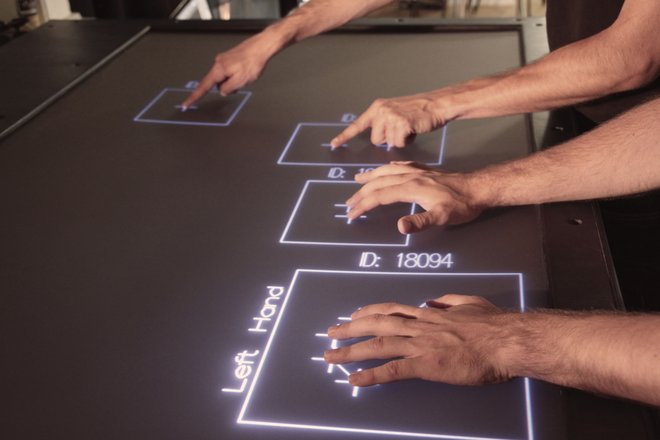
Detection of multiple hands and fingers. Note that the system is robust against false positives from contact with the palm of the hand.
Abstract
We propose a new approach for touch detection on optical multi-touch devices that exploits the fact that the camera images reveal not only the actual touch points, but also objects above the screen such as the hand or arm of a user. Our touch processing relies on the Maximally Stable Extremal Regions algorithm for finding the users' fingertips in the camera image. The hierarchical structure of the generated extremal regions serves as a starting point for agglomerative clustering of the fingertips into hands. Furthermore, we suggest a heuristic supporting the identification of individual fingers as well as the distinction between left hands and right hands if all five fingers of a hand are in contact with the touch surface.
Our evaluation confirmed that the system is robust against detection errors resulting from non-uniform illumination and reliably assigns touch points to individual hands based on the implicitly tracked context information. The efficient multi-threaded implementation handles two-handed input from multiple users in real-time.
Publication
Philipp Ewerling, Alexander Kulik, and Bernd Froehlich
Finger and hand detection for multi-touch interfaces based on maximally stable extremal regions.
In Proceedings of the 2012 ACM international conference on Interactive tabletops and surfaces (ITS '12). pp. 173-182, November 2012.
DOI=10.1145/2396636.2396663
[preprint]
